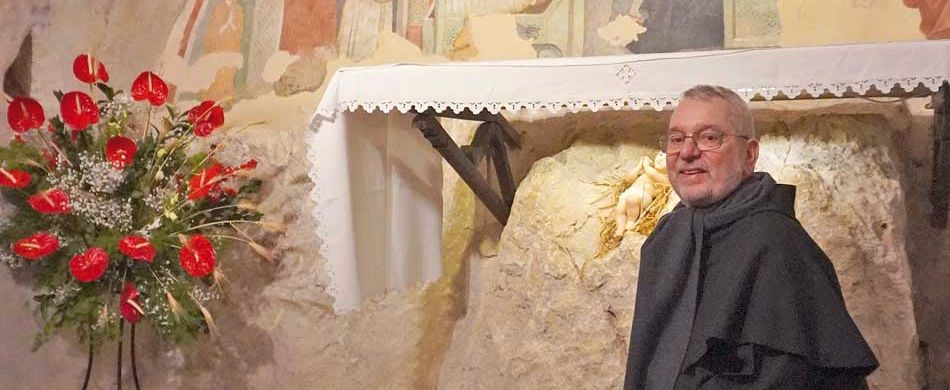DEAR friend, Christmas is fast approaching. We can feel it in the air; we can see it in the decorated trees in our towns and cities, in the shops and in the gardens… we can hear it in the heart-warming songs around us. And, thanks be to God, we can see it above all in our churches, where Advent prepares us, Sunday after Sunday, for the mystery of the birth of the Son of God.
But how are we preparing for Christmas in our homes? How are we preparing for the arrival of the Guest of Honor? Here is a very practical piece of advice that Pope Francis gave us all a few years ago: “A simple but effective way to prepare for Christmas is to make a nativity scene.” And to underscore the value of this tradition he decided to go to Greccio, where Saint Francis made the first crib in history.
So, dear friend, a few days ago I too went to Greccio to remember the 800 years that have passed since that Christmas in 1223 when St. Francis set up his nativity scene to remind himself and the whole world that God is very close to us; that he is real, alive, and vibrant.
The medieval town of Greccio is located about 700 meters above sea level, and all that remains of its glorious past are the ruins of a small castle. On the other hand, the name of this town is linked above all with St. Francis who organized the first living nativity scene there, so much so that Greccio is known throughout the world as the Franciscan Bethlehem.
History relates that in December 1223, Francis was doing penance in preparation for Christmas in the woods near Greccio. One day, having entered the town in order to preach, he saw a child sitting by a fire. He approached the boy and asked him to throw a lit ember towards the mountain; the saint wanted to know where the Lord wished a hermitage to be built for his friars. The ember reached a rocky wall of the mountain, and that is where the friars built their friary. It is perched on a mountain cliff, as if suspended by a mysterious gravitational force. The heart of the building is, however, the Chapel of the Nativity, which was built on the place where Francis set up his nativity scene.
Thomas of Celano, St. Francis’ first biographer, relates that Francis longed to see with his own eyes God becoming man. Therefore, on Christmas Eve, with the help of a local friend, he chose a cave, brought a donkey and an ox, and laid the wooden feeder with straw. Finally, everything was ready… even a priest to celebrate the Holy Mass. Around midnight the locals began to arrive, some with torches, others with lanterns, and all followed the Holy Mass with rapt attention. Many were so ecstatic that they said they actually saw the baby Jesus in the manger. Francis’ hope of making the mystery of Jesus’ birth visible had been fulfilled.
This is how the nativity scene tradition began; it is a simple and delicate sign that makes us perceive, with our eyes, that God became a child to show us that he is always close to us; that he loves us unconditionally; and that he wants us to be united with him forever.
I really hope that in your home there is a small space for your crib, not only to recall the teaching of St. Francis, but also as a sign that will help you to welcome Jesus into your heart, into your life.
On behalf of all the friars of the Basilica of Saint Anthony in Padua, Italy, I wish you a happy and Holy Christmas!




